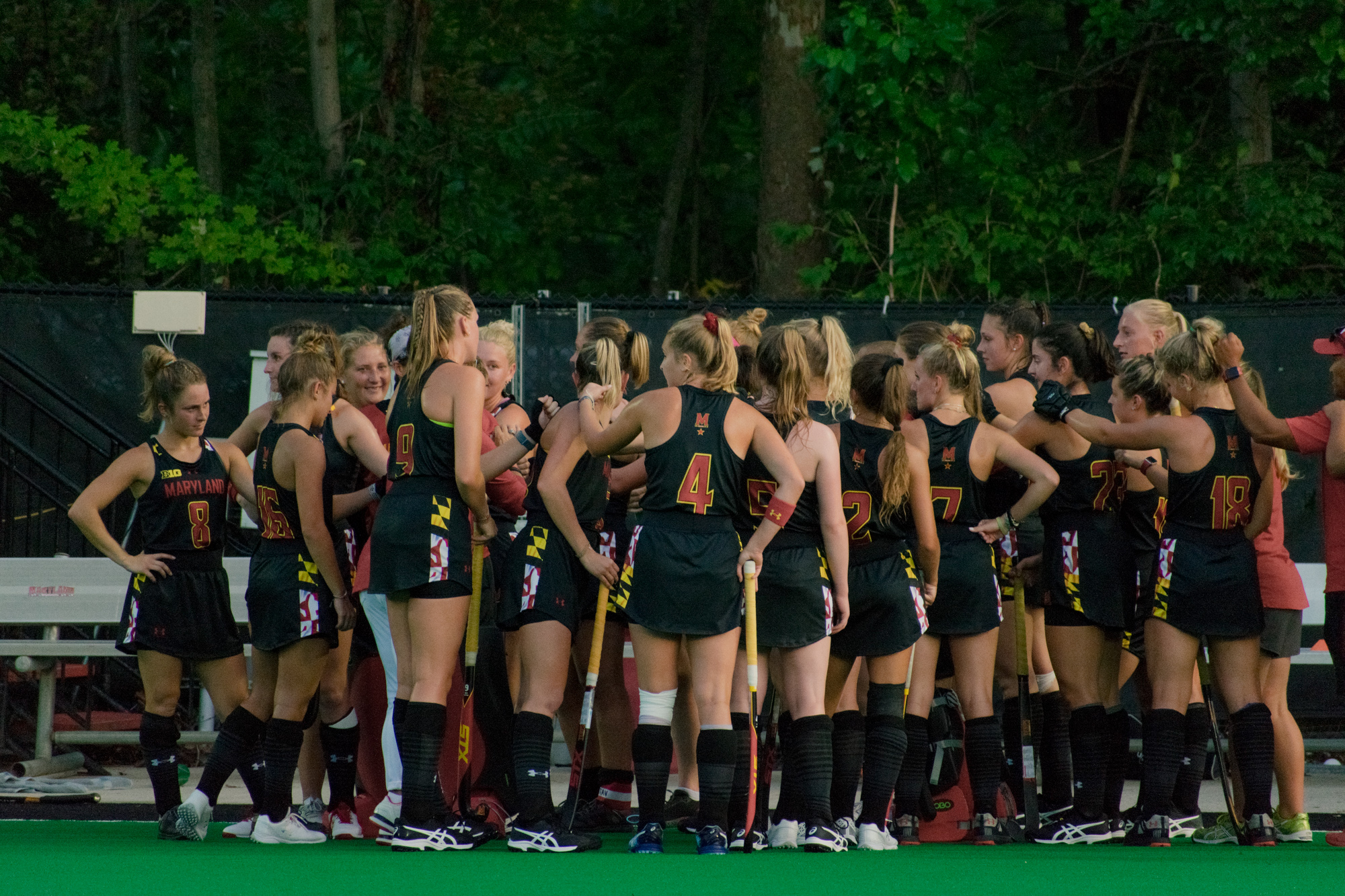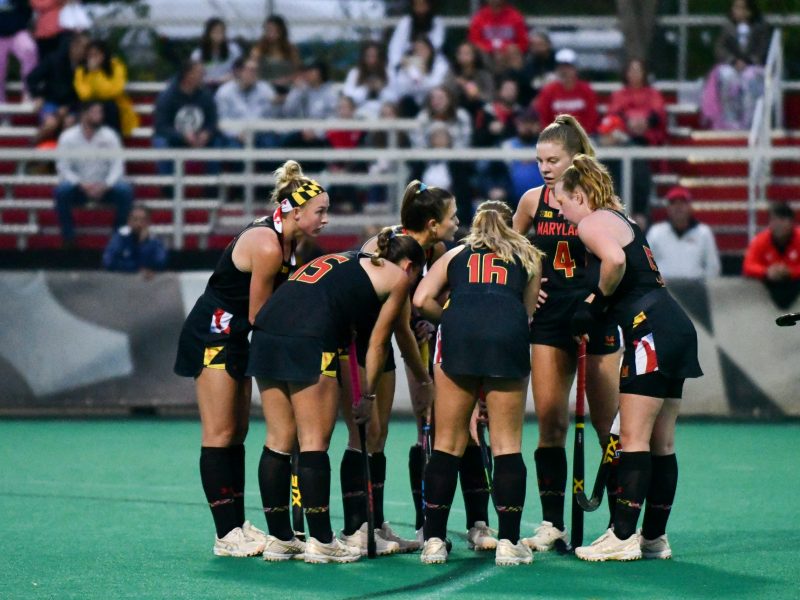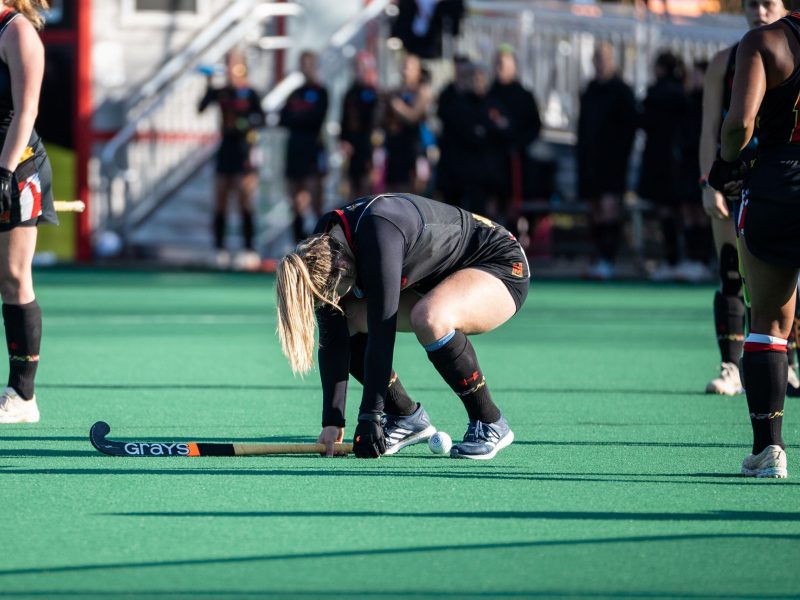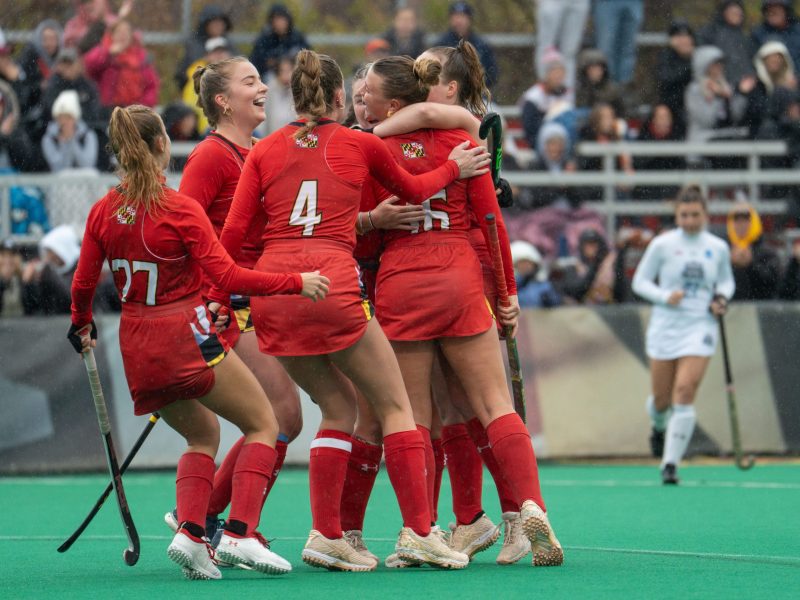The national anthem blared across the Field Hockey and Lacrosse Complex Sunday, and the Maryland field hockey team stood united, despite its differences in national allegiances.
Instead of placing their hands on their chests, the Terps positioned themselves in a semicircle, each player clasping their teammate’s hand before rhythmically swinging their arms back and forth.
It’s a tradition that has been around for years, one that is rooted in the increasingly globalized nature of field hockey. And with five key contributors coming from European countries, it’s clear that Maryland’s commitment to the international game has played a large role in its growth as a program.
“It’s very challenging and very fun to put together a brand [of hockey] where you integrate people and the culture of their sport into what we do,” coach Missy Meharg said. “That’s why we stand in the U. We don’t have our hands over our chest because we’re not all Americans. That is a very American thing to do.”
[Read more: Maryland field hockey’s team spirit helped it seal wins against Virginia and JMU]
Meharg, in her 32nd season as head coach, has overseen Maryland’s transition to a more global brand of hockey, with improvements in scouting technology making it easier to find and contact international players than ever before.
“What I like to look at is global recruiting,” Meharg said, “Ever since I’ve been at Maryland, I have stayed focused on identifying global talent and I think we continue to do so.”
And with international recruits often times bereft of opportunities to compete at the collegiate level in their home countries, Division I programs have looked to bring in an increasing amount of global talent.
“For a young player that wants to use their talents, wants to earn a degree, and wants to play field hockey competitively,” Meharg said, “it makes a lot of sense to want to come to the United States.”
[Read more: Maryland field hockey goalkeeper Noelle Frost named Big Ten Defensive Player of the Week]
Consequently, Maryland has utilized the global recruiting market to its advantage, with defenders Bodil Keus (Netherlands) and Hannah Bond (England) and attacker Bibi Donraadt (Netherlands) playing key roles in the past few seasons.
And that tradition has continued this year, with midfielders Nathalie Fiechter (Netherlands) and Linda Cobano (Germany) coming into their own in recent weeks after starting the season on the bench.
Fiechter, a freshman, has started each of the last three games, playing 60 minutes in Friday’s shootout victory over No. 6 Virginia before notching an assist against James Madison on Sunday. While Fiechter has proven to be a valuable asset on the field, the transition can be difficult at times for a newcomer — everything from balancing a class schedule to dealing with a new climate.
“I really had to adjust to the heat because it’s very humid here,” Fiechter said. “In Holland, it’s like 20 degrees.”
Meanwhile, Cobano has provided a spark from the midfield, starting all five games that she has played in and scoring twice since becoming eligible.
The emphasis on a more worldly style of play has pushed other Terps to broaden their tactical horizons. Over the summer, midfielder Madison Maguire and defender Kelee Lepage traveled to the Netherlands with the U.S. National Development Team to face some of the top European sides, including the U-21 Belgian national team and SCHC, a Dutch club team.
“Playing internationally [improves] American players’ games tremendously,” Maguire said. “Seeing the different styles of play and bringing back stuff from the … players [we] played with. … Everything is helpful.”
Maryland has impressed throughout the season, entering Big Ten play with a 6-1 record and victories over two top-25 teams. And they owe much of that success to their ability to meld the trappings of European attacking play with the fitness and intensity that is central to the American game.
“We have an incredible amount of diversity,” Meharg said. “We are a field hockey team that plays united, and we just build together to see the best brand of hockey we can play.”



